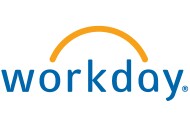
But, rather than solely being a negative, risk can actually be used to drive significant change. As one CISO/CIO from a state/local agency said, “If your IT systems go down, no one can do anything. Once we’ve been able to elevate the awareness of the risk [posed by outdated tech], we’ve gained better support for funding new technology.”
That concept—namely, how risk awareness can be leveraged to gain support for technological transformation—was the main topic of conversation at the Gartner IT Symposium in Orlando, during which Workday’s Global CTO Joe Wilson, and Rowan Miranda, managing director for state and local government and higher education, were joined by 16 public sector IT leaders. More than half of the CIO participants said that their top focus moving into 2025 was managing risk.
More than half of the CIO participants said that managing risk is their top focus moving into 2025.
With risk management established as a major priority, it’s critical that public sector bodies take action on two fronts. First, leaders must assess the risks their organization is facing and determine which stands to cause the greatest impact. Second, leaders must increase awareness of those impending issues, and educate other stakeholders on the most viable solutions. Here are three areas of risk that CIOs are already prioritizing for 2025.
1. Aging IT Systems and Workforce
For too long, the policy at public sector organizations has been “it works good enough.” As a CIO from Canada in the public sector observed, “If people are getting paid and we’re able to run business, it’s easy for everyone to agree that where we are is ‘good enough for now’ because there are bigger issues to address. But as IT systems continue to be used well past their point of obsoletion, the challenges begin to compound.
The complex, aging systems commonplace in the public sector—some of which even the vendors themselves no longer support—are well understood by existing employees. However, as that aging workforce edges toward retirement, the younger generations coming to replace them often don’t know how to use such archaic technology—or simply don’t want to.
“When I look at those who know our current platform, it’s the aging workforce. They would have to be the ones to dive into the code—but many of them are retiring, and the skills they have are for old technologies that younger people don’t have or want,” said one tech leader in a California municipality. “IT knows that we can’t continue to support this going forward. If we don't do something now, we’ll be in real trouble not too far down the road.”
An experienced Gartner analyst observed that the risk related to talent in the space is real. “When your technology doesn’t keep up, it makes it really difficult to hire,” he said. “When you don’t modernize and you stay behind, it’s challenging to bring on new talent. They don’t want to work on the old stuff.”
With new threats emerging every day, legacy IT systems can’t keep up—but government departments often face an uphill battle toward modernization.
2. The Uphill Battle Toward Modernization
One area where risk is starting to mount rapidly in the public sector is cybersecurity. With new threats emerging every day, legacy IT systems can’t keep up—but government departments often face an uphill battle in getting stakeholder buy-in for much-needed modernization. The solution? Underlining the security risks outdated tech can give rise to.
“If it’s related to cybersecurity, it goes to the top of the list and it’s priority No. 1 for everyone,” said one CIO, “It’s an easier way to talk about modernization. You get much more attention and interest if you talk about it from that security angle versus the productivity gains and the benefits.” Simply put, the risk value of remaining stationary far outweighs the potential costs of a major software upheaval.
As one tech leader explained, “We’re all in a space that is naturally risk averse. But to achieve modernization, we have to push through the risk. We have to move forward.” Without such advancements, public sector bodies are in danger of falling behind and opening themselves up to extensive cyber attacks. Conversely, the benefits of pushing past such risks are plentiful.
One college system in New York saw graduation rates increase by 4% thanks to the implementation of AI.
3. Separating Fact from Fiction with AI
It’s impossible to discuss modernity without also discussing AI. As is typical for the sector, many CIOs mentioned that they were approaching AI in a slow, deliberate fashion, gradually incorporating it into their existing application stack. Regardless, the potential use cases and preliminary results all seem incredibly promising—especially as a low-risk way to modernize IT departments.One college system in New York saw graduation rates increase by 4% thanks to the implementation of AI. “Using AI we were able to identify the students at risk of not finishing, understand why they weren’t graduating, and then give them the financial means to do so with new grants that got created and funded,” said their CIO.
Elsewhere, other organizations have been focused on practical use cases to help mitigate human error, including:
- Finding leaks in utility pipes
- Traffic optimization
- Conducting training
- Generating reports
READ MORE HERE








